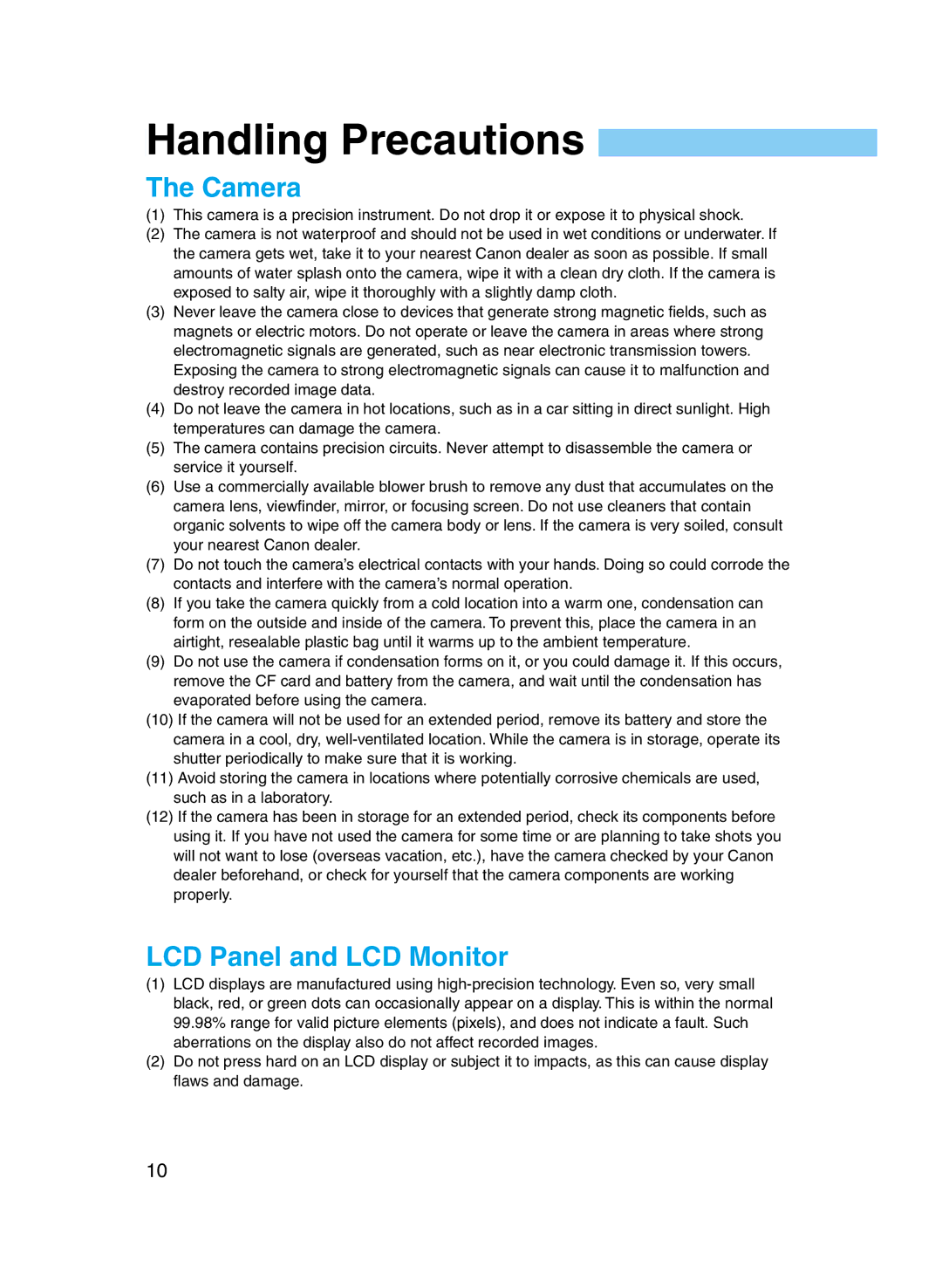D60 specifications
The Canon D60 is an advanced digital single-lens reflex (DSLR) camera that was first introduced in 2002, designed to appeal to both amateur photographers and professionals looking for a reliable, high-quality imaging tool. This camera showcases several key features and technologies that established it as a notable model in Canon's EOS lineup.One of the standout characteristics of the Canon D60 is its 6.3-megapixel CMOS sensor, which delivers stunning image clarity and detail. This sensor enables photographers to capture vibrant colors and accurate skin tones, making it an excellent choice for portrait and landscape photography alike. The D60 also boasts a maximum ISO sensitivity of 3200, allowing for improved performance in low-light situations, while maintaining minimal noise.
The D60 features Canon's DIGIC image processor, which greatly enhances image quality and processing speeds. This technology optimizes the camera's performance, ensuring rapid autofocus, precise color reproduction, and improved noise reduction at higher ISO settings. The result is a more efficient shooting experience with crisp, vivid images that can meet the demands of various photography styles.
Another highlight of the Canon D60 is its 9-point autofocus system, which provides fast and accurate focusing capabilities. This system allows photographers to capture sharp images even in dynamic and challenging situations, ensuring that moving subjects are rendered in stunning detail. The camera also features a continuous shooting mode, capable of capturing up to 3 frames per second, further enhancing its versatility for action shots.
Additionally, the Canon D60 offers a user-friendly interface with a 1.8-inch LCD screen, giving photographers the ability to review shots and navigate through settings with ease. It also includes various customizable settings, allowing users to tailor their shooting experiences to their preferences. The camera is compatible with Canon's extensive lineup of EF and EF-S lenses, providing users with diverse options for different photography needs.
In terms of build quality, the D60 has a solid construction, which reflects Canon's commitment to durability and performance. Its weather-sealed body makes it an ideal companion for outdoor shooting, offering protection against dust and moisture.
In conclusion, the Canon D60 is a well-rounded DSLR camera that combines impressive imaging capabilities, advanced technologies, and user-friendly features. With its blend of performance, versatility, and reliability, this camera has carved out a space in the hearts of photographers and remains a respected model in the digital photography world.

